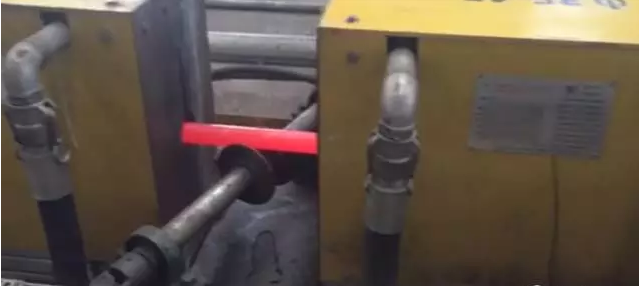Heat treatment quenching process knowledge, how much do you know?
01 Quenching
Definition and purpose
The purpose of quenching is to make the undercooled austenite for martensite or bainite transformation, to obtain martensite or bainite structure, and then with different temperatures tempering to significantly improve the strength of steel, hardness, resistance grinding, fatigue strength and toughness, so as to meet the various mechanical parts and tools different requirements.Through quenching heat treatment, the parts can meet some special performance like steel ferromagnetic, corrosion resistance and other special physical and chemical properties. When the steel is cooled in quenched medium with a change of state, its cooling is generally divided into the following three stages: steam film stage, boiling stage and convection stage.



02 Steel Hardenability
Hardening and hardenability is the two performance indicators that the capacity of steel can accept quenching. They are also the important basis for material selection and application.
1.The concept of hardenability and hardenability
Hardening is the ability of steel to achieve the highest hardness that can be achieved by hardening hardening under ideal conditions. The main reason for determining the hardness of steel is the carbon content of steel, more precisely the carbon content of solid solution in austenite when heating. The higher the carbon content is, the higher the hardenability of steel is.The steel alloying elements have little effect on the hardening, but significant impact on the hardenability of steel.
Hardenability refers to the characteristics that determine steel hardening depth and hardness distribution in the provisions of the conditions. That is, the ability to get the hardening depth. It is an inherent property of steel. The hardenability actually reflects the ease with which the austenite changes into martensite during quenching. It is mainly related to the stability of the cold austenite of steel, or the critical quenching and cooling rate of steel.
It should also be noted that the hardenability of the steel must be distinguished from the effective hardened depth of the steel under specific quenching conditions. The hardenability is inherent in the properties of steel itself, it depends only on its own internal factors, and has nothing to do with external factors; Steel effective hardening depth depends on not only steel hardenability but also cooling medium, part size and so on.
In addition, because the hardness and hardenability is also different, the steel with high hardness after quenching is not sure to have high hardenability. While the steel with lower hardness may have high hardenability.
2. The factors affecting the hardenability
The hardenability of steel depends on the stability of austenite. The factors that can improve the stability of supercooled austenite, make C curve move right and reduce the critical cooling rate can all improve the hardenability of steel. The stability of austenite depends primarily on its chemical composition, grain size and compositional homogeneity, which are related to the chemical composition and heating conditions of the steel.
3.The method of measuring hardenability
There are many methods for measuring steel hardenability and the critical diameter measuring and end quenching test method are commonly used.
(1) Critical diameter measuring: The Max. diameter that the core can get all martensite or 50% martersite is called the critical diameter when the steel is quenching in some certain medium, expressed as Dc. The critical diameter measurement method is to produce a series of different diameter rods and meaure hardness U curve which is distributed along the sample section after quenching. We find the center of the semi-martensite structure of the bar, the rod diameter Is the critical diameter. The greater the critical diameter is, the higher steel hardenability is.
(2) End quenching test: Taking standard size end quenching sample (Ф25mm × 100mm) afteraustenitizing,spray water cooling in a special equipment. After cooling, we test the distance between hardness and cooling end
4.Quenching stress, deformation and cracking
According to the existence characteristics of internal stress, the stress can be divided into instantaneous stress and residual stress.The internal stress that the workpiece is cooled is called instantaneous stress; After cooling, the internal stress residual in the workpiece is called residual stress.
Thermal stress refers to the stress caused by thermal expansion (or cold shrink) due to temperature difference for different parts when the parts are heating or cooling.
The thermal stress produced by quenching and cooling is due to the difference in the temperature difference between the sections during the cooling process. The larger the cooling rate is, the larger the temperature difference is, the greater the thermal stress is. Under the same cooling medium conditions, the higher the heating temperature of workpiece is, the larger the size is, the smaller the thermal conductivity of the steel is, the greater the temperature difference between the workpiece is, the greater the thermal stress is. If the workpiece is not cool evenly at high temperature, bend and deformation will occur. If the workpiece under the cooling process of instantaneous tensile stress is greater than the tensile strength of the material, the part will produce quenching cracks.
This article is from Forever-induction heat treatment furnace manufacturer. Welcome to send us inquiry to know more about heat treatment knowledge.

Overseas manager: Tom Wang
Email:tom@foreverfurnace.com
Phone: 0086-13303078975(whatsapp, wechat,line)
Specialist of induction heating system in China; Glad to be your business partner in induction heating field.
Post time: 10-23-2017



